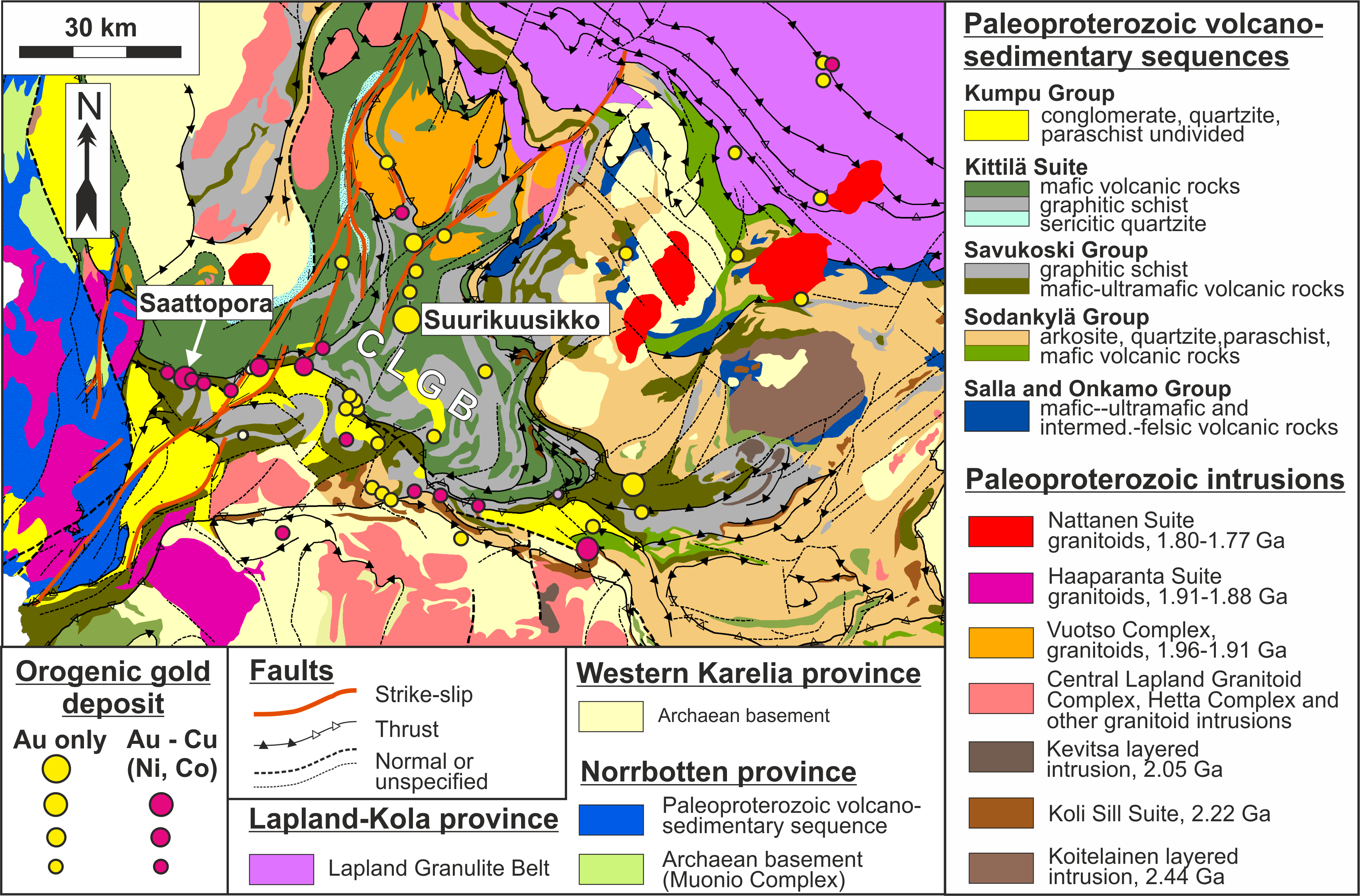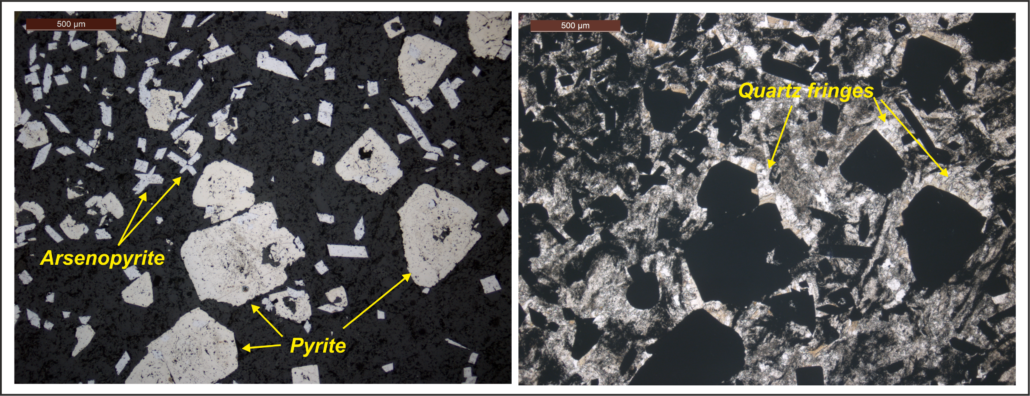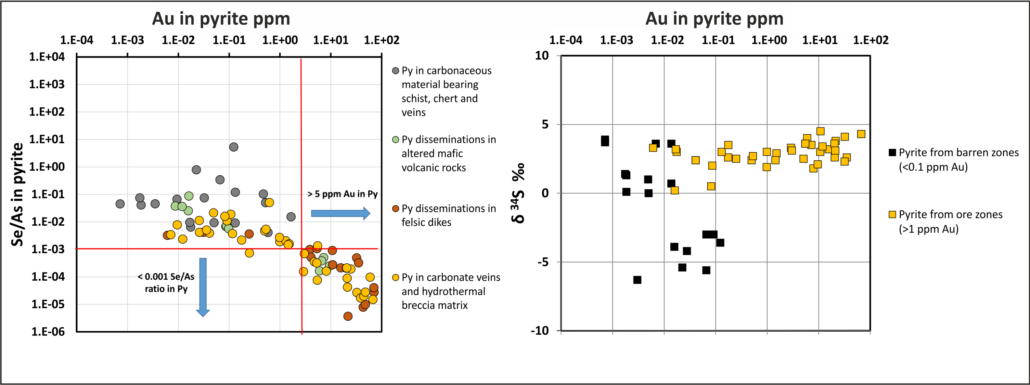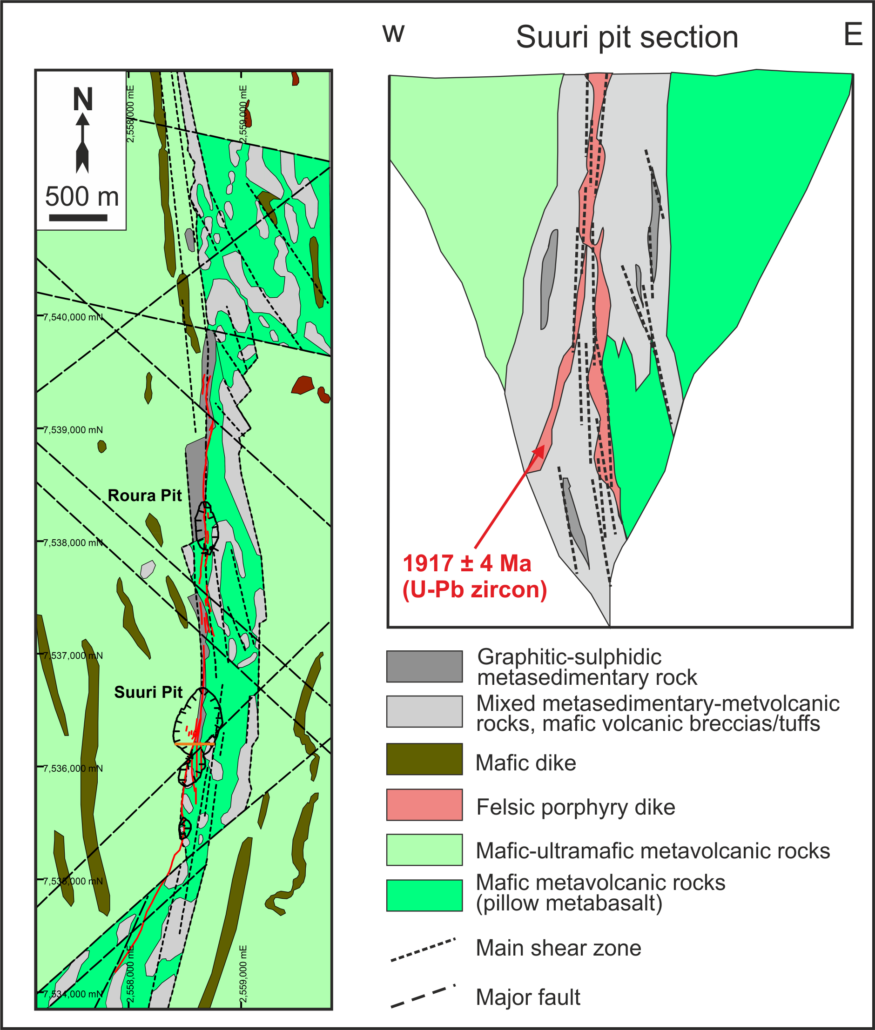Five discrete, near-orthogonal deformation events occurred during the tectonic evolution of the CLGB. The early D1 thrusting phase (ca. 1.92–1.91 Ga) and associated bend in the thrust splay provided the first-order structural control on the localization of the deposit. Albitization is the most intense, pre-ore alteration. Distal alteration zones are characterized by chlorite.
The main lodes are controlled by the N-S trending major shear zones smaller orebodies are also located along contacts of lithological units with contrasting competence. The lodes plunge to the north and known to about 1 km depth. They consists of disseminations of sulphides and carbonate (Fe-dolomite) veins. Age of mineralization at Suurikuusikko is estimated ca. 1916 ± 19 Ma based on Re-Os dating of auriferous arsenopyrite.
(Last update: 20.05.2020)
The Paleoproterozoic Central Lapland greenstone belt of northern Finland hosts a number of orogenic gold deposits mostly along two crustal-scale shear zones, the NNE-SSW–trending Kiistala shear zone and WNW-ESE–striking Sirkka shear zone. The Kittilä mine at the Suurikuusikko deposit is currently the largest gold-producing mine in Europe, with total reserves of 30.5 million tons of ore grading 4.49 g/t.
The deposit is located along the Kiistala shear zone and is hosted by ca. 2.0 Ga Kittilä Group consisting of mafic volcanic rocks and smaller proportions of a metasedimentary (greywacke and carbonaceous graphitic phyllite) package which was intruded by 1.91 Ga felsic porphyry dikes. These rocks suffered deformation and greenschist facies metamorphism during the Svecofennian orogeny (1.92-1.77 Ga).
The majority of gold at Suurikuusikko is refractory in arsenopyrite (73.2%) and pyrite (22.7%), with 4.1% as free gold. Other sulphide minerals are rare accessories. The trace element and sulphur isotope characteristics of pyrite from the high grade ore zones is significantly different from the low grade/barren zones. This finding suggests that paired trace element and sulphur isotope data are useful for defining vectors to ore.



